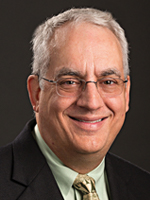Valerie Neff Newitt
June 2020—Best practices for HIV primary diagnostic testing and rapid detection of Mycobacterium tuberculosis complex are clarified and codified in new checklist requirements in the 2020 Laboratory Accreditation Program checklist edition published June 4.
A new requirement pertaining to blood culture contamination and a revised TB exposure plan requirement are also in the new edition.
CHM.33790 “HIV Primary Diagnostic Testing—Supplemental and Confirmatory Testing” is a new requirement initiated by the CAP Microbiology Committee and added to the chemistry and toxicology, immunology, point-of-care testing, limited services, and microbiology checklists.
It calls for the laboratory to follow public health recommendations or guidelines for HIV primary diagnostic testing, including primary screening and additional (supplemental and/or confirmatory) testing. The note says if additional testing after a primary screening test is recommended by public health authorities, the laboratory should perform additional testing reflexively if the specimen is suitable and the test is performed in-house, or send additional testing to a referral laboratory if the specimen is suitable, or provide guidance to providers about submitting additional specimens, if needed for supplemental or confirmatory testing.

Dr. Rhoads
The recommendations are to do two tests, the screening test and a confirmation test, says Daniel D. Rhoads, MD, D(ABMM), a member of the Microbiology Committee and section head of microbiology at the Cleveland Clinic. “However, we did not explicitly require that labs handle it in one specific way. The goal of the checklist is to make it easier for clinicians and patients to get the whole answer without doing more blood draws or getting incomplete results.”
He and others saw it as a gap in the checklist. “The requirement helps to put results in context, and helps providers and patients get the whole answer instead of just the first step in an algorithm. It is good lab medicine.”
“HIV testing has always been a two-stage process, sometimes more,” says Sheldon Campbell, MD, PhD, a member of the CAP Checklists Committee and professor of laboratory medicine at Yale School of Medicine and pathologist, VA Connecticut Healthcare System. “Basically we said laboratories are part of this process of getting supplemental or confirmatory testing, when required in HIV testing algorithms. Although we never required it in the checklist before, it has already been practiced since the very early stages of HIV testing.”
As the testing algorithms become more complex, the CAP decided this was the right time to raise awareness and have laboratories help providers navigate the algorithms more systematically, Dr. Campbell says.
“Because these algorithms have gotten so complicated, sometimes you can do reflex testing on the same specimen, and sometimes you have to get a new specimen,” he says. “Sometimes labs have the supplemental testing in-house, and sometimes they don’t. These complications can be challenging for providers to negotiate because there are so many options. Labs are in a better position than providers to make that call because they know where the testing is being performed and what specimens are needed.”

Dr. Campbell
The new requirement consolidates testing whenever possible. “As laboratory directors and as laboratories, we should always be looking for ways to provide a total answer,” Dr. Rhoads says. “It’s best to link tests so that a more complete answer can be provided to the person asking for the test and to the patient. There are times when it is good practice and can be helpful, but this is one time where we see it as essential.”
For all the benefits the requirement affords, it has the potential to put more burden on smaller labs, he says. “Big laboratories can do the screen and the confirmation in-house and make that routine—no big deal. However, it might be challenging for a smaller lab that only does the screen and doesn’t have confirmation testing. While they do not have to do it in their own lab, they do need to help the clinician get that specimen sent to a laboratory that can do the confirmation.”
“Certainly it is easier,” Dr. Campbell says, “to just do the test that’s ordered and be done with it. Now laboratories are required to be more active participants in the whole cycle of testing, from preanalytical to postanalytical phases.”
The evidence of compliance is a written policy for the performance of HIV testing, Dr. Campbell says, “including what to do with negatives, what to do with positives, how to report them, what additional testing you need to perform or send out, comments or requests for further testing on the part of the provider in the case of things that require such, and then patient reports with those results and guidance.”
Two new related requirements, both aimed at promoting rapid detection of TB, are in the newly released microbiology checklist. The first, MIC.32150 “Rapid Detection of Mycobacterium tuberculosis Complex—Laboratories Subject to US Regulations,” is based on World Health Organization and Centers for Disease Control and Prevention guidelines.The second, MIC.32170 “Rapid Detection of Mycobacterium tuberculosis Complex—Laboratories Not Subject to US Regulations,” allows laboratories to follow the established algorithms of their home countries or regions. Both requirements apply to patients suspected of having pulmonary tuberculosis, and do not apply to all situations in which a mycobacteriology culture is ordered. If TB is not suspected and testing is performed for reasons other than ruling out pulmonary TB, the requirement is not applicable.
“We try to be judicious about what we add to the checklist,” Dr. Campbell says of the decision to add the new TB-related requirements. But guidance on TB “was starting to become unanimous and overwhelming. Roughly a third of the population in the world is infected with Mycobacterium tuberculosis. Granted, most are latent, asymptomatic cases.” But WHO reports 10 million new TB cases a year, he says, and 1.6 million deaths a year as of 2017. “It’s still a tremendously important infectious disease health problem. We decided rapid detection of TB has reached the standard of having to be included in the checklist.”
Neil W. Anderson, MD, D(ABMM), a member of the Microbiology Committee and assistant medical director of microbiology at Barnes-Jewish Hospital and assistant professor, pathology and immunology, Washington University School of Medicine in St. Louis, says the requirement “is talking about testing for active tuberculosis infection, different than latent TB. That needs to be very clear.”
MIC.32150, for laboratories subject to U.S. regulations, requires that a nucleic acid amplification test be available, in the laboratory or by a referral laboratory, for the rapid detection of Mycobacterium tuberculosis complex on at least one respiratory specimen submitted to the laboratory (preferably the first diagnostic specimen) for mycobacterial culture.
It also notes: The CDC and WHO algorithms for diagnosis of Mycobacterium tuberculosis complex infections recommend performing a diagnostic nucleic acid amplification test (NAAT) on the initial respiratory specimen from patients suspected of pulmonary tuberculosis. This can include physician requests for patients with signs and symptoms of pulmonary TB for whom a diagnosis of TB is being considered but has not yet been established, and for whom the test result would alter case management or TB control activities (high index of clinical suspicion).
“This is a very delicate item. We don’t want people to misinterpret this,” Dr. Anderson cautions. “It’s an example of the CAP trying to promote best practices. WHO and the CDC recommended the availability of molecular testing because the diagnosis of active TB is time-sensitive. Molecular methods allow for a more rapid diagnosis than culture-based methods. You can diagnose and treat faster, and potentially help stop the spread of TB, through this requirement. However, we were very careful in how it is worded. The final wording of the checklist requirement says the testing is ‘available.’”

Dr. Anderson
 CAP TODAY Pathology/Laboratory Medicine/Laboratory Management
CAP TODAY Pathology/Laboratory Medicine/Laboratory Management
